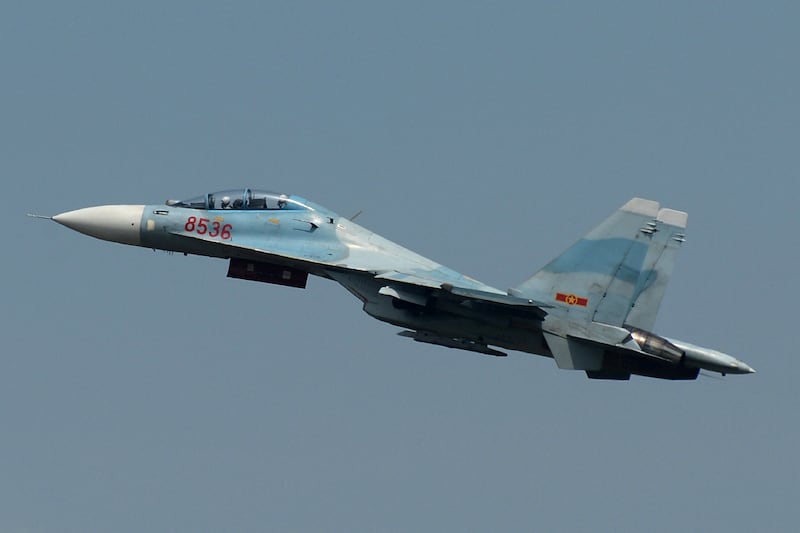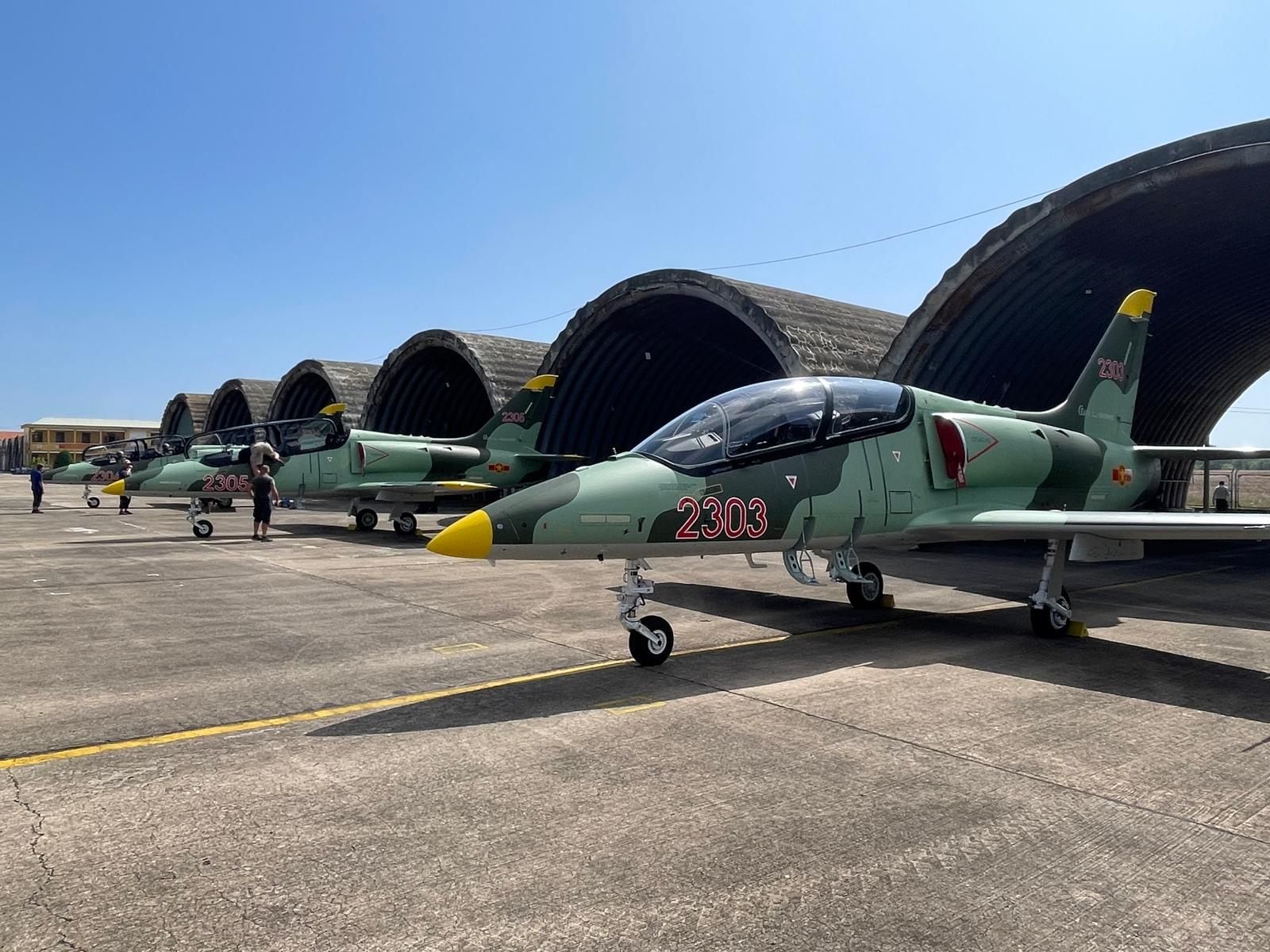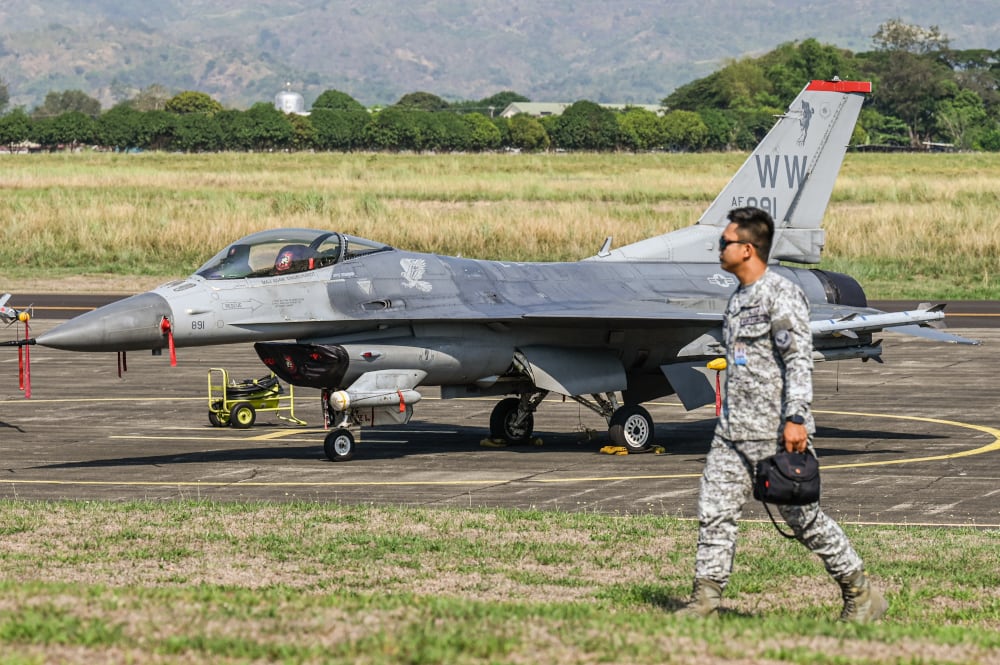Updated April 21, 2025, 03:40 a.m. EDT
BANGKOK – Vietnam has reached an agreement with the United States to buy F-16 fighter jets, a defense website said, citing industry representatives and a former U.S. government official.
Hanoi will acquire at least 24 of the Lockheed Martin single-engine fighters which, combined with other U.S. military ware, could add up to the biggest ever defense deal between two countries, 19FortyFive said Saturday. It is likely Hanoi will opt for the F-16 V model, which Lockheed calls the most advanced fourth-generation fighter, the site said.
The U.S. is also considering selling Lockheed Martin’s Hercules C-130 military transport plane to Vietnam, according to Reuters news agency. The U.S. lifted a longstanding arms embargo on its former enemy Vietnam in 2016.
In 2022, Hanoi said it was ready to reduce its heavy reliance on Russian arms, which accounted for around 80% of total weapons imports at the time.
A year later, during then-President Joe Biden’s visit to Hanoi, Vietnam and the U.S. began talking in earnest about a major deal.
It may have come to fruition this month, after Vietnam scrambled to cut its record trade surplus with the U.S. in the face of threatened 46% tariffs.
Prime Minister Pham Minh Chinh said earlier in April that Vietnam would buy more American weapons as part of addressing the trade imbalance between the two countries.
The Vietnamese foreign ministry did not answer Radio Free Asia’s calls about the reported F-16 deal. An email to the U.S. State Department was unanswered at the time of publication.
With no official confirmation one analyst recommended caution, pointing out that many details are still unclear.
“Will the aircraft be new or second hand? If new, how will Vietnam afford them, and is Washington willing to offer the latest variants to Vietnam,” asked Ian Storey, a senior fellow at Singapore’s ISEAS-Yusof Ishak Institute.
“If second-hand, why would Vietnam want them when it needs cutting edge aircraft? Will Congress green light the sale or will Vietnam’s human rights record pose an obstacle?”
US military trainers
In November last year, Vietnam received delivery of five Beechcraft single engine turboprop aircraft, the first batch of 12 ordered from the U.S.
The planes, built by Textron Aviation, are used to train fighter jet pilots, which sparked speculation a deal on the F-16 was close.

Russia has supplied most of Vietnam’s military planes, including 35 Sukhoi Su-30s and more than 30 Su-22s but there has been growing concern about safety and maintenance of the ageing fleet.
At the start of last year, a Vietnam Air Force Su-22 tactical fighter-bomber lost control and crashed during a routine training flight in Quang Nam province.
In November, a Russian Yak-130 training aircraft exploded mid-air in Binh Dinh province. Its two pilots ejected and survived.
Chinese concerns
Storey, the ISEAS expert, said a switch from Russian to U.S. planes would “deal a major blow” to relations between Moscow and Hanoi. It would also “risk provoking China’s ire,” he said.
China’s president and defense minister both visited Vietnam this month, talking up relations and even sounding positive about solving territorial disputes in the South China Sea.
China’s state-backed Global Times newspaper was critical of possible U.S.-Vietnam military ties when the Biden administration raised the prospect of F-16 sales two years ago.
It cited defense experts as saying a deal “serving the U.S.’ hegemonic goals of containing China, would stir up troubles that sabotage peace and stability in the region.”
It was no secret that Vietnam flagged Chinese concerns as a sensitive matter when discussing the F-16 sale with the U.S., according to Carl Thayer, emeritus professor at Australia’s University of New South Wales, Canberra.
China criticized sales of the jet to Taiwan and the Philippines as a threat to its sovereignty and regional stability, but Vietnam was better prepared, he said.
“Vietnam appears to have set the ground to procure F-16s from the United States by simultaneously raising defense cooperation with China,” he said.
The U.S. planes are likely to come with some strings attached, Thayer added.
“The F-16s package will undoubtedly include U.S. military access to Vietnamese military facilities for training, maintenance and other support but not the permanent stationing of U.S air force planes or U.S. naval ships on Vietnamese territory.”
Edited by Taejun Kang and Stephen Wright
Updated with comments from Ian Storey and Carl Thayer



